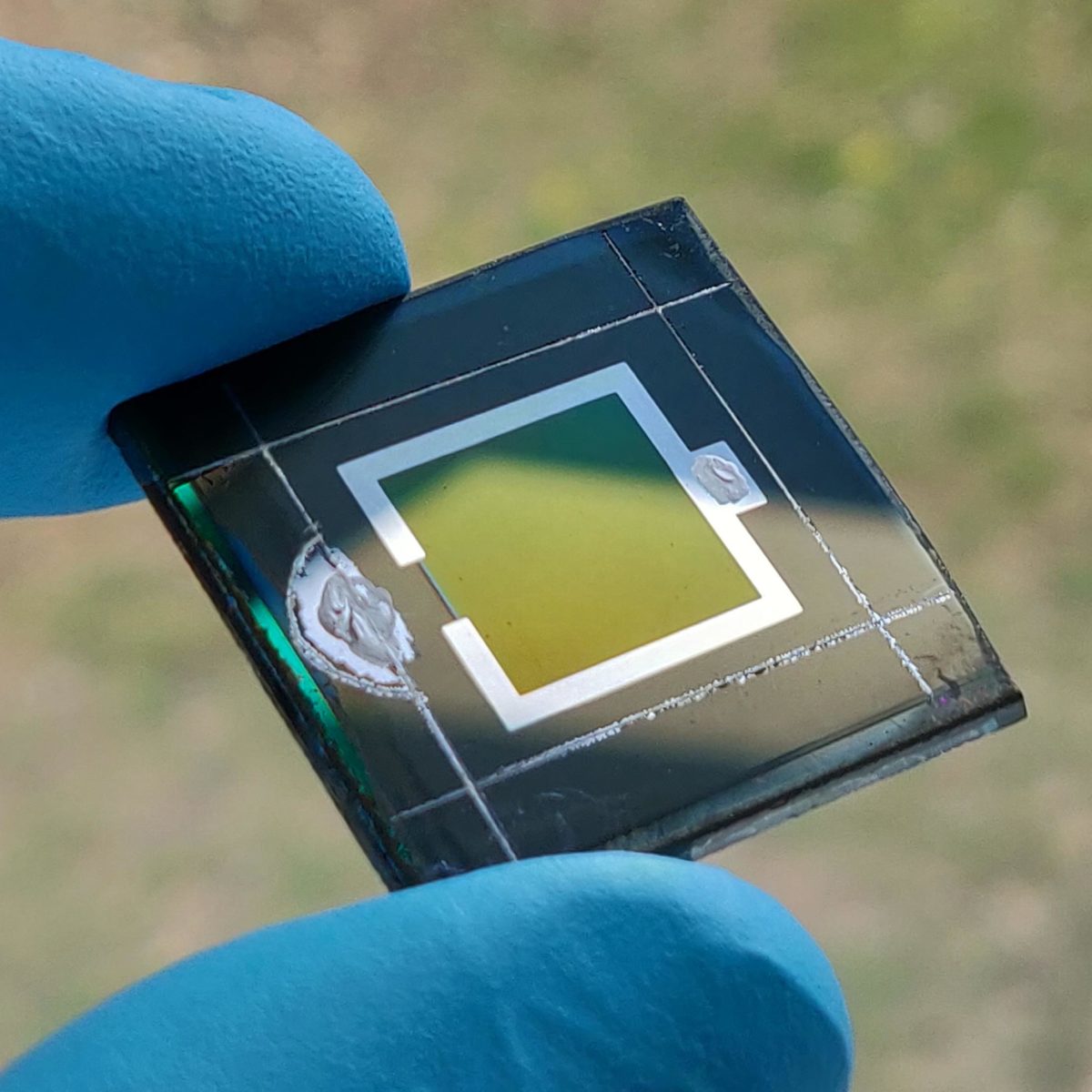Scientists from Helmholtz-Zentrum Berlin (HZB) have revealed that they have achieved an efficiency of 24.16% with a tandem cell combining CIGS and perovskite technology.
The result, which has been confirmed by the Fraunhofer Institute for Solar Energy Systems's (ISE) CalLab, was obtained with a tandem cell measuring 1cm². The new design improves upon HZB’s previous record of 23.26%, set in September, which was already a significant improvement on the 21.6% efficiency rating it achieved in February 2019.
“This time, we have connected the bottom cell (CIGS) directly with the top cell (perovskite), so that the tandem cell has only two electrical contacts, so-called terminals,” explained Dr. Christian Kaufmann from PVcomB at HZB. “Especially the introduction of rubidium has significantly improved the CIGS absorber material.”
“We used a trick that we had previously developed,” said fellow researcher Marko Jost. The “trick” involved the application of so-called self-assembled monolayers (SAM) molecules to the CIGS layer, to form a self-organized monomolecular layer. This improved the contact between the perovskite and CIGS. SAM molecules are molecules that self-assemble into monolayers for efficient perovskite solar cells.
Popular content
This kind of molecule organizes itself on the electrode surface until a dense, uniform monolayer is formed. “The ultra-thin layer exhibits no optical losses and, thanks to its self-organizing property, could conformally cover any surface – including textured silicon in tandem solar-cell architectures,” HZB said in a previous study.
The new record means tandem cell efficiency has surpassed the 23.35% record for a standalone 1cm² CIGS cell set in January 2019 by Solar Frontier. If scientists can demonstrate an efficiency gain for the tandem structure over a standalone cell, as has been achieved already with perovskite/silicon tech, the combination could garner significantly more interest.
This content is protected by copyright and may not be reused. If you want to cooperate with us and would like to reuse some of our content, please contact: editors@pv-magazine.com.



2 comments
By submitting this form you agree to pv magazine using your data for the purposes of publishing your comment.
Your personal data will only be disclosed or otherwise transmitted to third parties for the purposes of spam filtering or if this is necessary for technical maintenance of the website. Any other transfer to third parties will not take place unless this is justified on the basis of applicable data protection regulations or if pv magazine is legally obliged to do so.
You may revoke this consent at any time with effect for the future, in which case your personal data will be deleted immediately. Otherwise, your data will be deleted if pv magazine has processed your request or the purpose of data storage is fulfilled.
Further information on data privacy can be found in our Data Protection Policy.